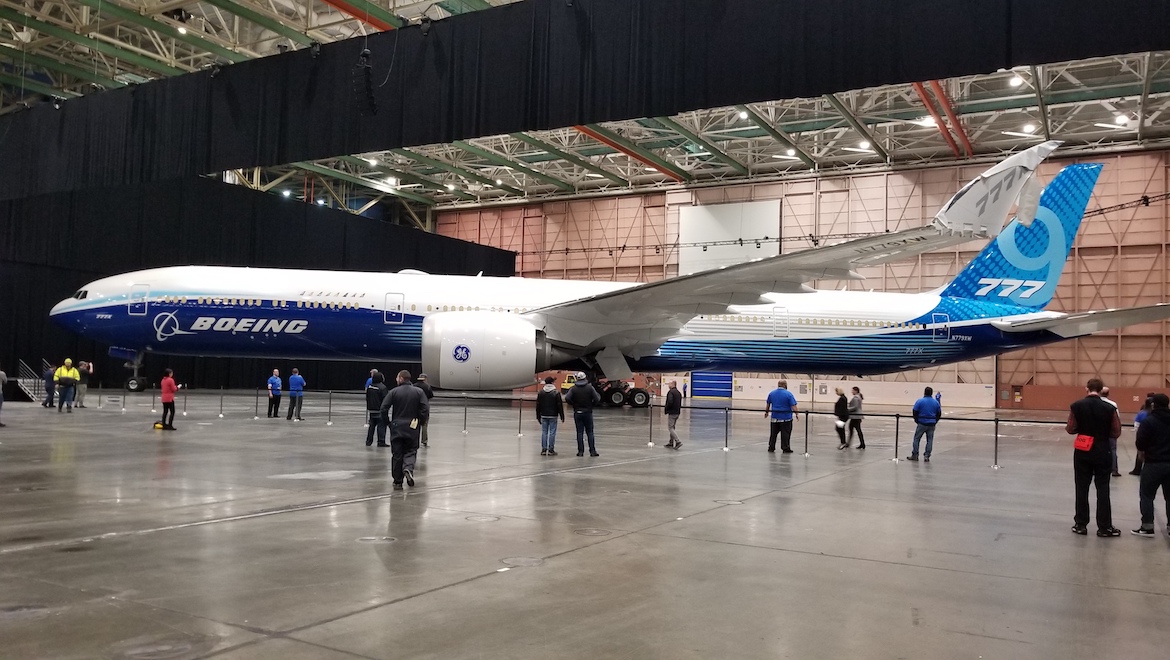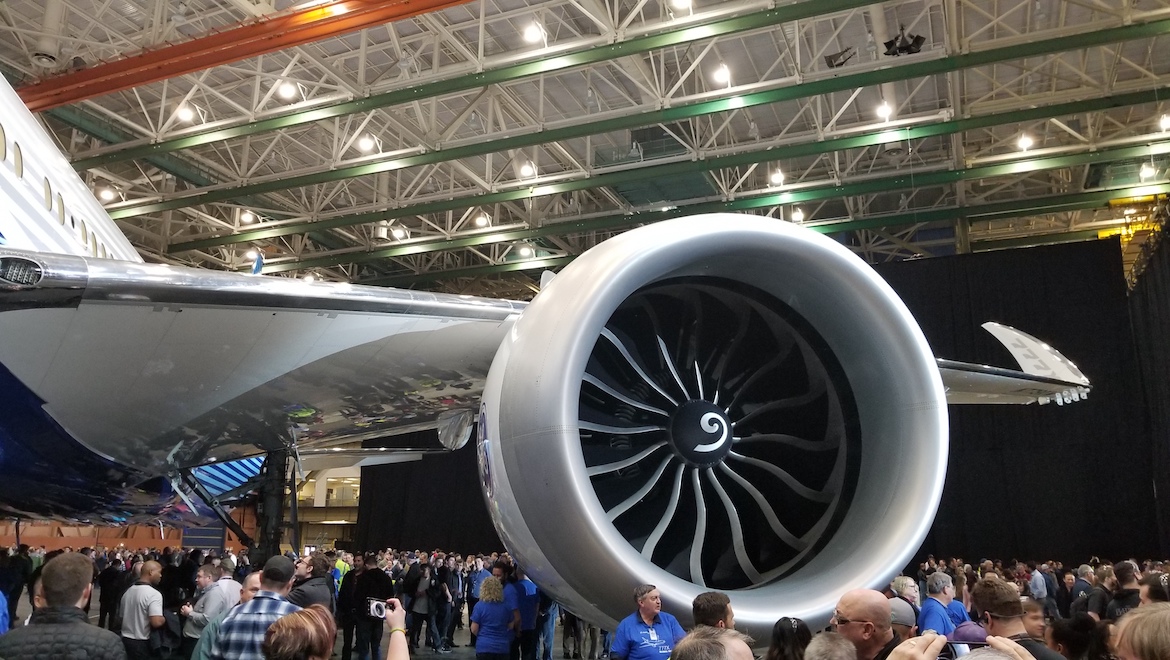
Boeing chief financial officer Greg Smith says the 777-9X is still on track to begin flight tests later in 2019 despite the need for some re-testing work on the GE9X engines powering the aircraft.
Speaking at a conference on Wednesday (US time), Smith described the GE9X as the “long pole in the tent right now”.
“There’re some challenges. They’re working through their own testing. So we’re having to do some retesting. And they’re working their way through that,” Smith said at the UBS Global Industries and Transportation Conference in New York, according to a transcript published on the Boeing website.
“As we see it today, we still expect to fly this year and entry into service in 2020, but obviously we’re staying very close to that and we’ll keep you up-to-date of that changes, but that’s still the current assumption.”
Boeing has two test 777-9X aircraft on the ground at its Everett facility just outside Seattle in Washington State. Meanwhile, a further two 777-9X aircraft are in final assembly.
Photos taken at Everett and posted on social media suggested engine runs with the GE9X commenced in late May:
777-9 INITIAL ENGINE RUN!! She’s ALIVE!!!! N779XW had her first engine run today producing smoke – and excitement from those watching ???. #b7779 #boeing7779 #777x #b777x #boeing777x #n779xw #boeing pic.twitter.com/FskLnvYol9
— Katie Bailey (@KPAE_Spotter) May 29, 2019
The First Engine Run on the @Boeing 777X
Video Credit: Skylinevideopae
Tags: #GE9X #B77W #b777xlovers #777X #boeing777lovers #B777X #planespotting #aviationlovers #aviationpic #aviationphoto #b777x @jonostrower @JonROhman @flightradar24 @GEAviation @BoeingAirplanes pic.twitter.com/IGhy1T7ndB
— Boeing 777X (@b777xlovers) June 1, 2019
There was an expectation Boeing was targeting a June first flight for the 777-9X, the first of two models in the 777-X family of aircraft.
However, an “anomaly” discovered in the GE9X engine’s compressor during tests could change that timetable. GE9X general manager Ted Ingling told Aviation Week it was not known at this stage whether the issue would affect flight tests.

Flight tests for the GE9X engine commenced on a GE Aviation 747 flying testbed in March 2018.
Built with a composite fan case and carbon fibre composite fan blades, the 134-inch diameter GE9X engine is designed to deliver some 105,000lb of thrust.
Other key features included a next-generation 27:1 pressure-ratio 11-stage high-pressure compressor; a third-generation TAPS III combustor for high efficiency and low emissions; and CMC material in the combustor and turbine.
IHI Corporation, Safran Aircraft Engines, Safran Aero Boosters and MTU Aero Engines AG are also participants in the GE9X program.

Launched in 2013, the 777-X family of aircraft comprise the 777-8X and 777-9X variants. The pair is an upgrade from Boeing’s in-production 777-200LR and and 777-300ER.
The first aircraft in production is the 777-9X, which is 77 metres in length, has a total wingspan of 72 metres and is capable of flying 7,600nm when carrying 400-425 passengers in a two-class configuration, according to Boeing figures.
It has been pitched as the ideal replacement for the very large aircraft segment of the market, especially in light of Airbus’s decision to cancel the A380 program.
Boeing is also building the 777-8X, which is still in development. The Boeing website lists the aircraft as having a range of 8,700nm and a passenger capacity of 350-375 passengers. The aircraft is expected to enter service in 2022.
The 777-8X was regarded as a potential replacement for the in-service Boeing 777-300ER. It is also a candidate for Qantas’s Project Sunrise challenge to Airbus and Boeing to have an aircraft capable of operating nonstop between Australia’s east coast and New York and London.
Airbus’s candidate is the A350 platform.
GE Aviation GE9X program general manager Ted Ingling spoke to the Australian Aviation podcast in November 2018. The podcast can be found here.











